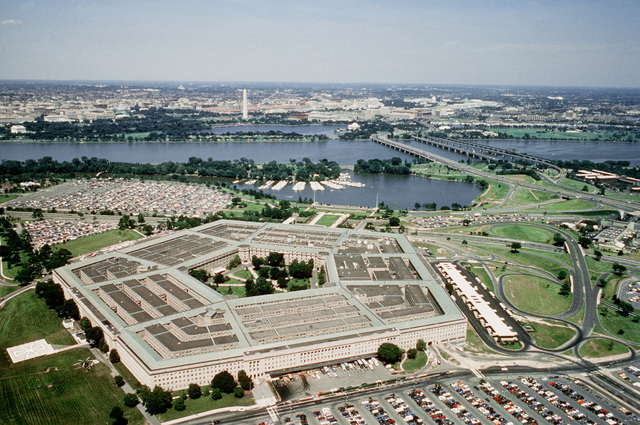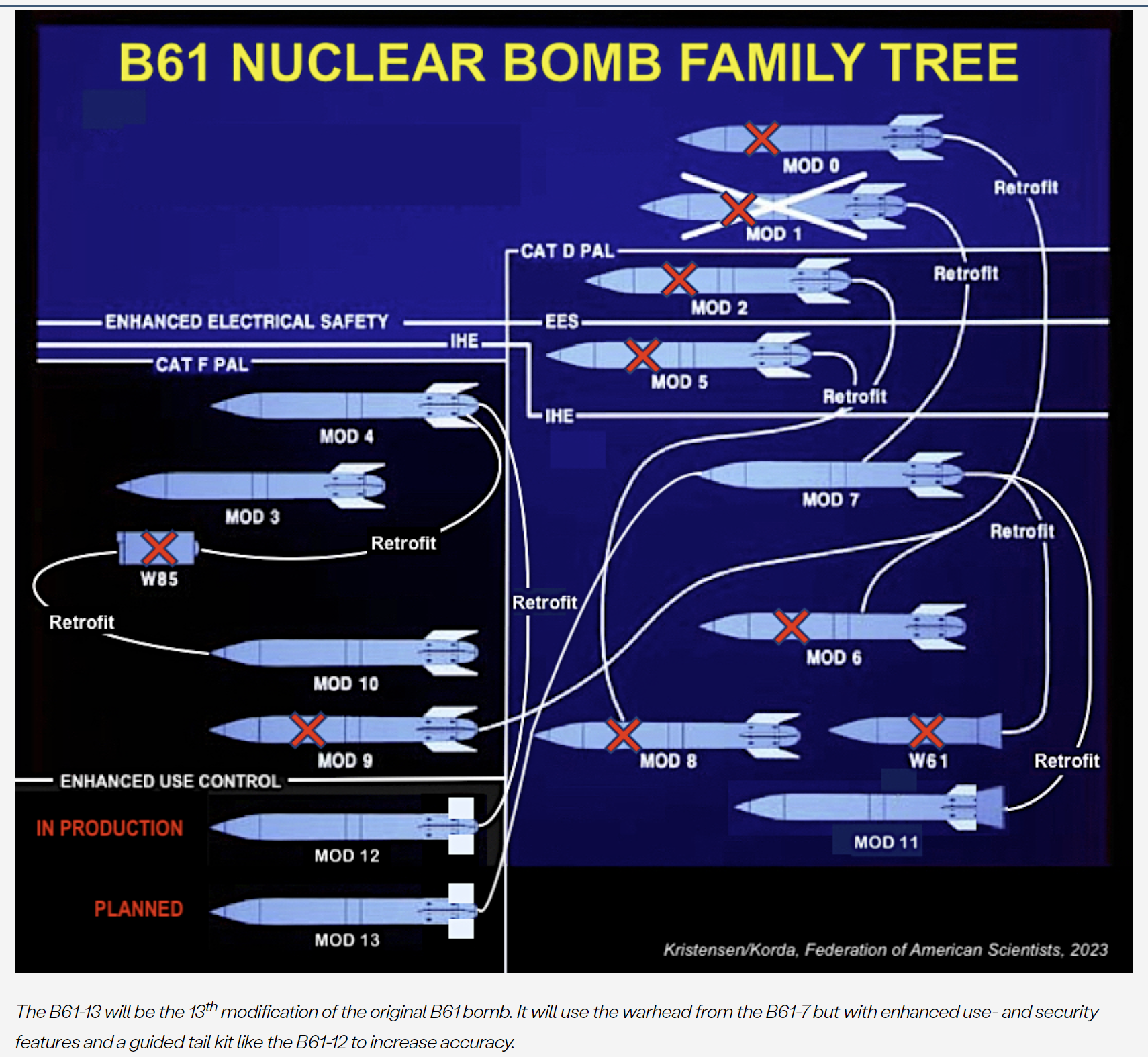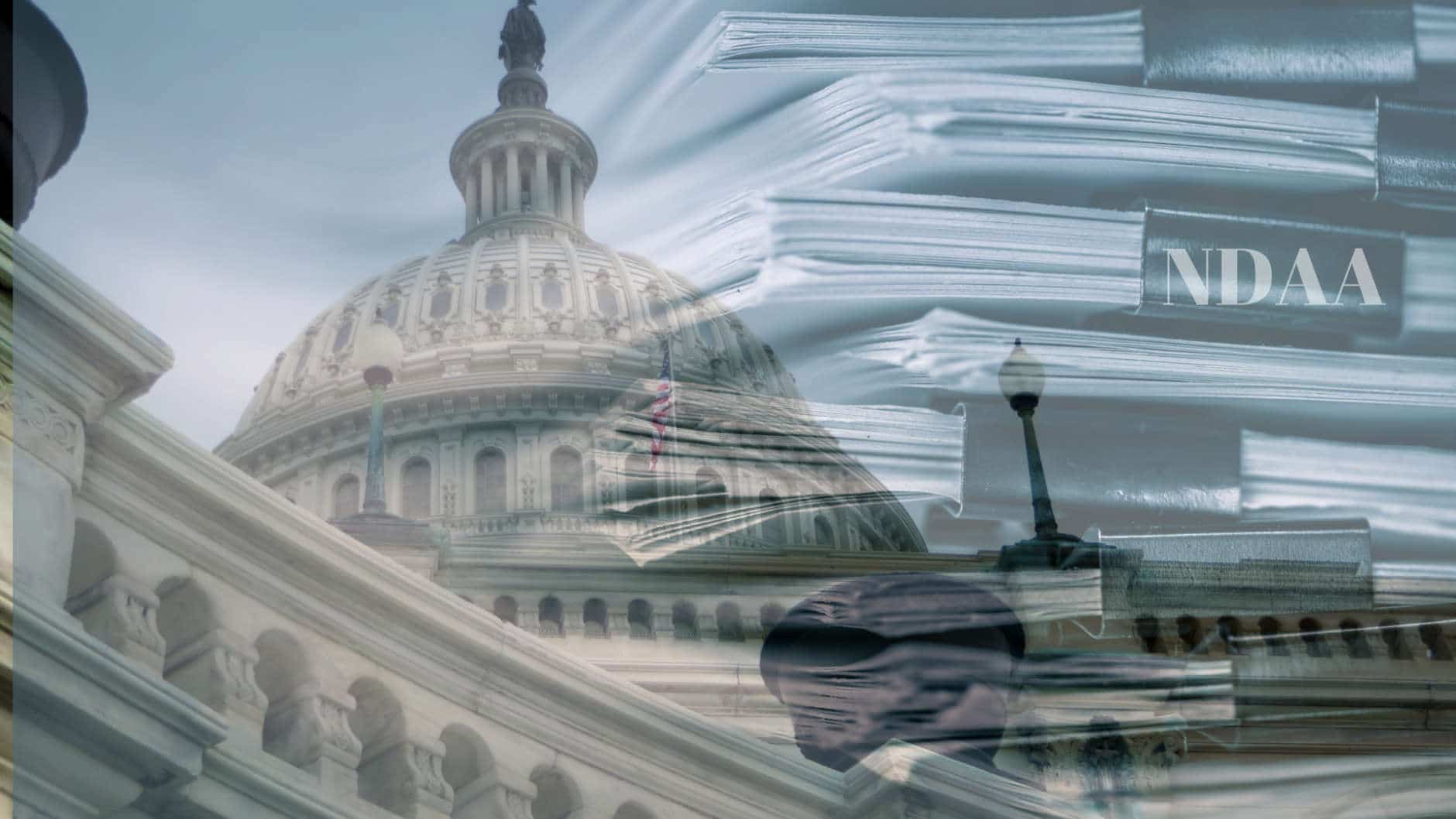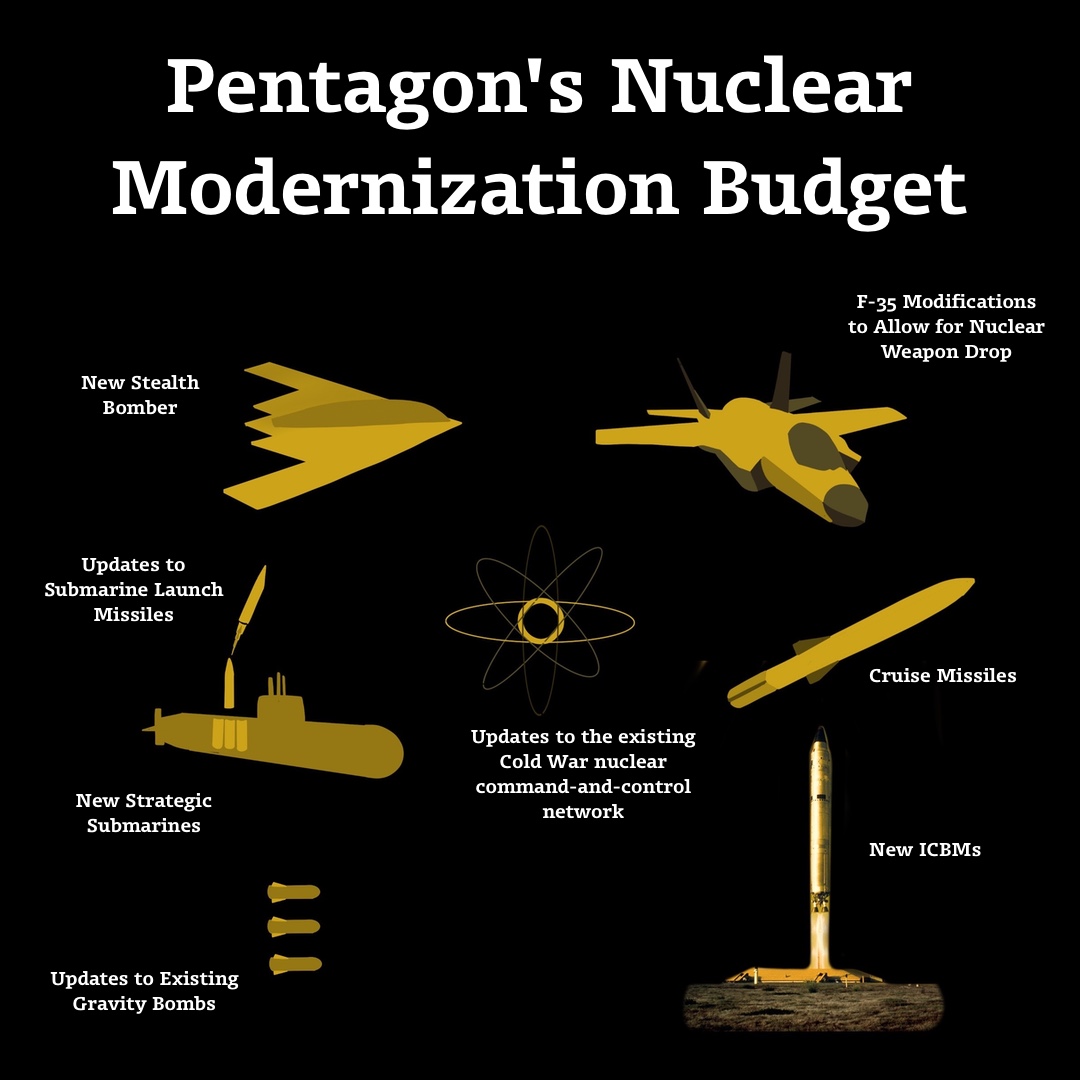RECENT UPDATES
Does the United States Need More Nuclear Weapons?
The United States is estimated to have roughly 3,700 warheads in its active arsenal. This includes 1,670 thermonuclear warheads deployed on 660 powerful long-range missiles on land and at sea or available for delivery on strategic bombers. There are also another 100 tactical nuclear bombs that can be delivered on shorter-range aircraft, according to independent estimates.5 The use of a fraction of these weapons, many primed for launch within minutes, would lead to mass destruction on an unprecedented global scale.
Contrary to the hype, more nuclear weapons would not improve, on balance, the U.S. capability to deter nuclear attack. In fact, significant increases in the U.S. deployed nuclear arsenal would undermine mutual and global security by making the existing balance of nuclear terror more unpredictable and would set into motion a counterproductive, costly action-reaction cycle of nuclear competition.
By Daryl G. Kimball, Arms Control Today | July/August 2024 armscontrol.org
The experience of the Cold War proves that nuclear arms racing produces only losers and increased risks for everyone.

Nevertheless, following more than a decade of deteriorating relations between the United States and its main nuclear rivals, dimming prospects for disarmament diplomacy, and major nuclear weapons modernization efforts, China, Russia, and the United States are now on the precipice of a dangerous era of unconstrained nuclear competition. Concern in U.S. national security circles about Chinese and Russian nuclear capabilities has grown since Russia’s full-scale invasion of Ukraine effectively shut down the U.S.-Russian nuclear risk reduction and arms control dialogue. The Kremlin has rejected the White House proposal to negotiate a new nuclear arms control framework to replace the New Strategic Arms Reduction Treaty (New START), which expires on February 5, 2026.1 China has declined U.S. offers to continue bilateral discussions on reducing nuclear risk and on nuclear postures.2
Moreover, as the U.S. intelligence community forecasts that China could amass as many as 1,000 nuclear weapons by 2030, with several hundred of them deployed on a larger force of intercontinental ballistic missiles (ICBMs), some members of the nuclear weapons establishment, leading members of Congress, and Biden administration officials have suggested that the massive U.S. arsenal may not be sufficient to deter two “near peer” nuclear rivals.3 China is currently estimated to have some 500 nuclear weapons and 310 long-range, nuclear-armed ballistic missiles.4
Nuclear Weapons Issues & The Accelerating Arms Race: February 2024
FEDERAL BUDGET NEWS
Release of federal FY 2025 budget expected March 11 (it will initially be just topline numbers).
Meanwhile on the FY 2024 budget: House and Senate Armed Services Committee authorized funding exceeding Biden’s request, including money for the Sea-Launched Cruise Missile and nuclear warhead (reminder: that the President doesn’t want), plus adding $$ for plutonium pit production at the Savannah River Site. But appropriations bills are still not happening because of ever increasing congressional dysfunction. This is now best exemplified by Republicans rejecting an immigration bill they initially drafted but that Trump denounced because he wanted immigration to remain a hot issue during the presidential election campaign.
The current second “laddered” Continuing Resolution that is keeping the government running expires March 1 and 8.
Nuclear Weapons Issues & The Accelerating Arms Race: January 2024
FEDERAL BUDGET NEWS
Half of the federal budget (including Energy and Water appropriations which funds DOE) shuts down January 19 and the other half February 2 if a Continuing Resolution (CR) is not reached. House Speaker Johnson agreed to a previous funding agreement with the Biden Administration but the so-called Freedom Caucus is now in revolt.
Update: On January 18, Congress passes third stopgap funding bill instead of full FY24 budget, keeping the government funded until March.
Sen. Martin Heinrich aids and abets the new, more dangerous nuclear arms race. He is outspokenly proud of all of the nuclear weapons money in New Mexico, and he is one of the chief congressional architects of expanded production of plutonium “pit” bomb cores. In congress, Heinrich sits on the Senate Energy and Water Appropriations Subcommittee from where he can direct $$billions to the Sandia and Los Alamos Labs.
But during the Department of Energy’s long presence in the Land of Enchantment, according to Census Bureau data New Mexico has slid in per capita income from 32nd in 1959 to 47th in 2022. New Mexico has the most children living in poverty (30%) and is rated dead last in well-being of children and quality of public education. Finally, in a report that the Los Alamos Lab tried to suppress, six county governments surrounding Los Alamos County suffer a net economic loss from LANL.
In fiscal year 2024 DOE will spend $10 billion in New Mexico, 75% for core nuclear weapons research and production programs and 5% for dumping related radioactive wastes in our state. DOE’s budget is 6% greater than the entire operating budget of the State of New Mexico ($9.4 billion).
Senator Heinrich, please explain what good all that nuclear weapons money does for average New Mexicans, and not just for the privileged nuclear weapons enclaves.
For much more, please see https://nukewatch.org/wp-content/uploads/2023/06/New-Mexico-Americas-Nuclear-Colony.pdf
ACCELERATING NUCLEAR ARMS RACE
North Korea Issues Ominous Warning About Nuclear Strike This Year
North Korea has issued an ominous warning about “the highest risk of clashes this year” between the totalitarian state and its neighbor to the south, which could end in “a nuclear strike,” according to South Korean media. Yonhap News Agency, a major media outlet in Seoul, reported on Thursday that North Korea media condemned recent Army artillery exercises and naval firing drills and exercises. The Korean Central News Agency (KCNA), the state news agency of North Korea, said the exercises are “self destructive” and called South Koreans “warmongers,” according to Yonhap.
Nuclear Weapons Issues & The Accelerating Arms Race: November 2023
Nuclear weapons issues
New bomb: The Pentagon has announced a new nuclear bomb, the B61-13. The B61-12 is now in production and will be forward deployed in Europe. But it has a dial-a-yield that maxes out at 50 kilotons. The new B61-13 will max out at 360 kt to get at hardened deeply buried targets (both have limited earth-penetrating capabilities). At one time, production of the B61-12 at least potentially signified retirement of the 1.2 megaton surface burst B83 strategic bomb, but now production of the B61-13 will probably be relatively quick at the tail end of already scheduled B61-12 production.
See: https://www.defense.gov/News/Releases/Release/Article/3571660/department-of-defense-announces-pursuit-of-b61-gravity-bomb-variant/ and https://media.defense.gov/2023/Oct/27/2003329624/-1/-1/1/B61-13-FACT-SHEET.PDF
See excellent analysis by the Federation of American Scientists:
https://fas.org/publication/biden-administration-to-build-a-new-nuclear-bomb/
Strategic Posture Review: Commissioned by Congress,
“The Commission recommends that a strategy to address the two-nuclear-peer threat [Russia and China] environment be a prerequisite for developing U.S. nuclear arms control limits for the 2027-2035 timeframe. The Commission recommends that once a strategy and its related force requirements are established, the U.S. government determine whether and how nuclear arms control limits continue to enhance U.S. security…”
Continue reading
Biden’s Nuclear Posture Review Fuels the New Nuclear Arms Race
FOR IMMEDIATE RELEASE, October 27, 2022 |
Jay Coghlan, 505.989.7342 jay@nukewatch.org
Santa Fe, NM– Today, the Biden Administration has released its long awaited unclassified Nuclear Posture Review. It headlines a “Comprehensive, balanced approach to defending vital national security interests and reducing nuclear dangers.” It also declares that “deterrence alone will not reduce nuclear dangers.”
“Deterrence” against others has always been the publicly sold rationale for the United States’ nuclear weapons stockpile. First, there is the inconvenient fact that the U.S. was the first and only to use nuclear weapons in war. But secondly, the United States and the USSR (now Russia) never possessed their huge stockpiles for the sole purpose of deterrence anyway. Instead, their nuclear weapons policies have always been a hybrid of deterrence and nuclear war fighting, which threatens global annihilation to this very day.
FULL PRESS RELEASE [PDF]
Why Funding for the SLCM Nuclear Warhead Should Be Deleted
Introduction: In 1991, in response to the ongoing collapse of the Soviet Union, President George H. Bush ordered the withdrawal of all nuclear-armed sea-launched cruise missiles (SLCMs) from U.S. surface ships and submarines. In 2018 President Trump’s Nuclear Posture Review proposed to redeploy SLCMs on Virginia-class attack submarines, saying they would provide the United States with “a needed non-strategic regional presence” that would address “the increasing need for flexible and low-yield options.”1 Congress subsequently approved $15.2 million in FY 2022 funding for the Navy’s new cruise missile and nuclear warhead.
In March 2022 President Biden transmitted a new classified Nuclear Posture Review to Congress that reportedly canceled the Sea-Launched Cruise Missile. In parallel, his proposed FY 2023 budget for the National Nuclear Security Administration (NNSA) has no funding for the SLCM nuclear warhead. This has prompted some congressional pushback, with one suggested compromise being continuing modest research funding. But as a Congressional Research Service analysis put it: “The Navy indicated that the program was “cost prohibitive and the acquisition schedule would have delivered capability late to need.”
Nuclear missiles, bombs market to surge 73% by 2030: Report
“…International treaties and consortiums discourage nuclear testing,” the firm said in a report summary. “This hampers the market growth.”
By Sarah Morland, Reuters | April 4, 2022 livemint.com
 US President Joe Biden last week requested a record peacetime national defence budget, which would prioritise modernizing its nuclear “triad” of ballistic missile submarines, bombers and land-based missiles.
US President Joe Biden last week requested a record peacetime national defence budget, which would prioritise modernizing its nuclear “triad” of ballistic missile submarines, bombers and land-based missiles.
The report predicted that demand for small nuclear warheads, which can be easily deployed through aircraft and land-based missiles, would fuel faster growth in these segments, although submarine-launched ballistic missiles (SLBMs) accounted for a quarter of the market in 2020.
While North America dominated more than half the global market in 2020, the report predicted the fastest growth would come from the Asia-Pacific region on initiatives by India, Pakistan and China to bolster their nuclear arsenals.
“However, international treaties and consortiums discourage nuclear testing,” the firm said in a report summary. “This hampers the market growth.”
It predicted that the rising influence of non-nuclear proliferation treaties and national efforts should increase the number of warheads in storage or awaiting dismantlement.
Active weapons, however, accounted for the “lion’s share” – more than two-thirds – of the market in 2020, it said, due to investment in nuclear arsenals and new warhead purchases.
Britain, China, France, Russia and the United States at the start of the year issued a joint statement saying there could be no winners in a nuclear war and it must be avoided.
A Megaton of Waste
The White House’s new defense budget lavishes money on America’s nuclear weapons program in the name of competing with China and Russia. It’s totally unnecessary.
“Biden has scaled back his domestic ambitions even while pushing the defense budget upward and onward.”
By Fred Kaplan SLATE | March 30, 2022 slate.com

President Joe Biden’s defense budget for 2023 is gargantuan. It comes to $813.3 billion, nearly $60 billion higher than the budget he requested a year ago for 2022. Just a few weeks ago, Congress passed a bill adding $25 billion to that earlier budget. Biden’s new budget, which he submitted on Monday, accepts the congressional hike as a baseline and raises the pot by another $32 billion.
To put this in perspective, Biden’s $813 billion exceeds President Donald Trump’s final defense budget by $75 billion—which, for a sense of proportion, is about 2.5 times what the government spends on Pell grants for low-income college students. It tops the amount that the Trump administration figured it would spend in 2023 by $40 billion.
Current U.S. Nuclear Weapons Issues: New Year’s Update — January 15, 2022
U.S. nuclear weapons issues:
- In anticipation of the NonProliferation Treaty Review Conference that was to start January 4 the P-5 (original nuclear weapons powers U.S., Russia, China, France and U.K.) came out with an unbelievable collective statement on how they are in compliance with the NPT Article VI mandate to disarm. Then the Review Conference was indefinitely postponed because of omicron.
- Biden signed the FY 2022 Defense Authorization Act (DAA). Congress gave the Pentagon $24 billion more than Biden asked for. So much for ending endless wars. The DAA fully authorizes what the Biden Administration asked for National Nuclear Security Administration nuclear weapons programs, which increased Trump’s FY 2021 budget which saw a 25% from his FY 2002 budget. LANL is to get a cool billion in FY 2022 for expanded plutonium pit production alone.
- Still no appropriations. Second Continuing Resolution (CR) runs out in February.
- First anniversary of Treaty on the Prohibition of Nuclear Weapons January 22
Current U.S. Nuclear Weapons Issues: Monthly Update — December 15, 2021
FY 2022 National Defense Authorization Act: The Bad News.
As Politico put it:
PROGRESSIVES’ PENTAGON POUNDING: … progressives barely put their stamp on Pentagon policy this go-round. Bipartisan provisions requiring women to register for the draft, cracking down on Saudi Arabia and imposing sanctions on Russia were nixed; legislation repealing outdated Iraq war authorizations fell by the wayside; reforms to the military justice system and efforts to combat extremism in the ranks were pared back; and a proposal to give Washington, D.C., control of its National Guard was dropped,” they wrote. Democrats hold power in the House, Senate and White House for the first time in more than a decade, yet the high-profile defense bill got more GOP votes than from Biden’s own party. As progressive lawmakers made their dissatisfaction with the bill’s high price tag clear, centrist Democrats knew they needed Republican support to pass the House and Senate.”
Progressives truly felt they had a historic chance to turn their priorities into policy, but the realities of a 50-50 Senate with no filibuster made that near impossible. And with midterms next year, it’s likely they missed their best chance.
Nuclear weapons: Congress added $500 million to Biden’s request for NNSA Total Weapons Activities, which was essentially Trump’s request to begin with. Trump’s Sea-Launched Cruise Missile and B83 (1.2 megatons) service life program were kept. $1.72 billion request for “Plutonium Modernization” authorized.
- However, the NDAA is authorization, not appropriations. The 2nd Continuing Resolution runs until February after which the appropriators will have to come up with something. There’s a chance that the Sea-Launched Cruise Missile and B83 sustainment program could be shot down. While those would be notable victories, they really only amount to damage control (i.e., rolling back two of Trump’s pet projects) as the $1.7 trillion modernization beast lumbers on.
The Pentagon considers eight projects part of its nuclear modernization budget: new ICBMs, cruise missiles, updates to submarine-launched missiles, a new stealth bomber, new strategic submarines, updates to existing gravity bombs, modifications to the F-35 fighter jet that allow it to drop nuclear weapons, and updates to the existing Cold War nuclear command-and-control network. Since 2013, Congress has approved about $67 billion for those, according to Forecast International, a data analysis firm owned by Defense One’s parent company. In fiscal 2021, the funding totaled $13 billion, or about 1.8 percent of the Pentagon’s $704 billion budget.
A Rough Breakdown of the Trillion Dollar Cost of Modernization:
1/3 NNSA
The National Nuclear Security Administration is a semi-autonomous agency within the Department of Energy
Warhead Production
- Warhead "Life Extension Programs"
- Includes upgrades to B61, W80, W76
- New plutonium pit production
- Includes upgrades to B61, W80, W76
- Nuclear Weapons Labs
- Nuclear Weapons Production Plants
- Other Facilities, infrastructure
2/3 Department of Defense
Warhead Delivery Systems
- Land-Based ICBMs
- 642 (400 to deploy) new ICBMs
- SSBNs: Ballistic Missile Submarines
- 12 new Columbia Class SSBNs
- Bombers & Air-Launched Cruise Missiles
- Upgrades to the B-1, the B-2, and the B-52
- LRSB: 100 new B-21 strategic bombers
- LRSO: 1000+ nuclear-capable cruise missiles
- Upgrades to the B-1, the B-2, and the B-52
Warhead Production and 'Life Extension Programs'
- The W76 was chosen as a SSBN (submarine-launched ICBM) warhead.
- The W80-4 is to be the warhead for the next-gen nuclear cruise missile (LRSO).
- The B61-12 upgrade with new Tail-kit.
- Plutonium pit production.
Note that the NNSA (National Nuclear Security Administration) runs all weapons related activities under the DOE. Environmental cleanup of wastes from nuclear weapons production is under the jurisdiction of the DOE without NNSA involvement. While the NNSA budget is set to increase, DOE's is set to decrease.
Warhead Delivery Systems
- New ICBMs (aka GBSD, or Ground-Based-Strategic-Deterrent): This is a contested element of the planned triad modernization. William Perry and others have argued that land-based ICBMs are the one way a computer glitch could end up triggering total nuclear war, and should therefore be eliminated in favor of bombers and SSBNs. Boeing, Northrup Grumman, and Lockheed have submitted bids for the roughly $70 billion job.
- SSBNs are to be designed and built by Electric Boat in Connecticut. Plans call to build 12, at a cost $5 billion apiece, and no-one knows where those funds will come from. There's been talk of a supplemental Sea-Borne Deterrence Fund; but Air Force wants a similar budgetary trick for its nuclear systems.
- Bombers: Northrup Grumman is prime contractor on the new B-21 as well as the B-2 upgrade. Boeing is contractor for B1 and B52 upgrades.
- Long-Range Stand-Off cruise missiles: This is the other most contested of the new systems planned, with many experts calling it dangerous and unnecessary. Air Force has issued a call for bids for 1000+ missiles. Boeing, Raytheon, Northrop Grumman, and Lockheed Martin are expected to submit bids.
Resources
Nothing Found
It seems we can’t find what you’re looking for. Perhaps searching can help.
Quotes
Nothing Found
It seems we can’t find what you’re looking for. Perhaps searching can help.





